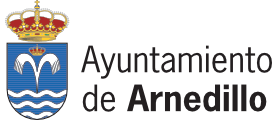Arnedillo
General information:
Location:
Population: 450 (INE 2022).
Area: 48 km2.
Elevation: 651 m.
County: Arnedo.
Distance from Logroño: 62 km.
Distance from Calahorra: 27 km.
Geography
Located in the High Valley of the Cidacos River, 651 m. above sea level, Arnedillo covers an area of 48 km2. It is part of Arnedo county, 62 km from capital city of Logroño and 27 km from the second most populous city Calahorra, with convenient access from the A-68 motorway.
Arnedillo was bestowed as a royal domain in 1170 by King Alfonso VII. It belonged to the Diocese of Calahorra as a country Estate, an area surrounded by mountains and known among other things, for its hot springs.
The Valley of the Cidacos River was declared Biosphere Reserve by the UNESCO in 2003 and is located in Eastern La Rioja.
The Cidacos River has its source in Soria and flows 77 km before reaching the Ebro in Calahorra. Following its 50 km along La Rioja, one can visit rural villages and towns of the meseta and the riverbank. Despite being small and slow in volume, the Cidacos is rich in culture and natural features.
Peña Isasa, Peñalmonte and the Peñas of Arnedillo, are all part of the European network of natural protected areas Red Natura 2000.
Historical Framework
The first historical documents about the town trace it back to medieval times. The vows of Count Fernán González, from mid 10th century refer to it as “Arnietello“.
In 1156, Rodrigo Cascante, Bishop of Calahorra donated to its incumbents a large part of his rightful property of Arnedillo and royal revenue collected from it.
The Estate of Arnedillo was donated by Alfonso VIII to the Church of Calahorra, according to a document from 1200 signed by Bishop Juan de Préjano and, for some time, the bishops of Calahorra were also lords and masters of Arnedillo.
After the proclamation of Enrique de Trastámara as King of Castilla, in Calahorra in 1336, he donated the Cameros Estate to Juan Ramírez of Arellano and with it the ‘houses of Arnedillo’ out of gratitude for his support on the dynastic rivalry against Pedro I ‘the Cruel’.
In March 18th 1817, an earthquake hit the town, ripping through the nearby mountains and buildings and even causing the hot springs to halt their flow for nearly three months.
Arnedillo was part of the province of Soria until 1833, when Logroño became a province in its own right. The village of Santa Eulalia Somera has been part to its municipality since 1292.
Santa Eulalia Somera
Santa Eulalia is a borough 4 km east from Arnedillo. This municipality with population 48 (INE 2022) is located in the Alto Cidacos. Surrounded by hills, it has a wide extension of irrigated and non-irrigated crops, olive trees, almond trees and vineyards.
Its most attractive features are the Church of Santa Eulalia of Mérida, the caves of Ajedrezado and the Viewpoint, as well as the restored washing place and the rock winepresses at Cogote de las Pilas.
One can visit part of a complex of early medieval hermit caves of great archeological value and interest, with a unique construction of carved floor-to-ceiling niches that resemble an almost perfect chess board design.
Road Access
Arnedillo connects with its county seat Arnedo through the LR-115, that passes through Santa Eulalia Somera, Santa Eulalia Bajera and Herce. From Arnedo one can reach Cervera de Río Alhama, Alfaro, Calahorra and Logroño.
Along the Cidacos river, the LR-115 connects Arnedillo with other towns in the valley, like Peroblasco and Enciso.
If you continue down this road, the route leaves La Rioja through the Valley of the Cidacos and continues on to Yanguas, connecting with the capital city of Soria. Hence Arnedillo is one of the bus stops connecting Soria and Calahorra.
Coat of Arms of Arnedillo
In a pool of blue, over waves of silver and azure, a single stream of silver splits in two in its fall, so lifting the royal crown, closed in gold and draped with gules. Royal crown crest.
Decree 70/1965 of January 14th authorizing the Council of Arnedillo of the Province of Logroño to adopt its municipal heraldic seal (B.O.E. núm.21 del 25-01-1965).
The Council of Arnedillo, province of Logroño, has deemed it convenient to provide the Municipality with a distinct and unique coat of arms, to convene and symbolize the most representative facts about the town. To such effect and in use of the attributes conferred by the current legal dispositions, the council proclaimed for its approval a descriptive project and design to bear its name – after processing the document, in accordance to the pre-established regulations, and once issued the mandatory ruling by the Royal History Academy, favorable to its request. As proposed by the Minister of Interior and previously deliberated by the Cabinet in their meeting of January 8th, 1965, I HEREBY DECREE: A single article. – The Council of Arnedillo, of the Province of Logroño, is allowed to adopt its heraldic municipal coat of arms, which will be established in the proposed format as per the ruling of the Royal History Academy: In a pool of blue, over waves of silver and azure, with a single stream of silver that splits in two in its fall, so lifting the royal crown, closed in gold and draped with gules. Royal crown crest.





